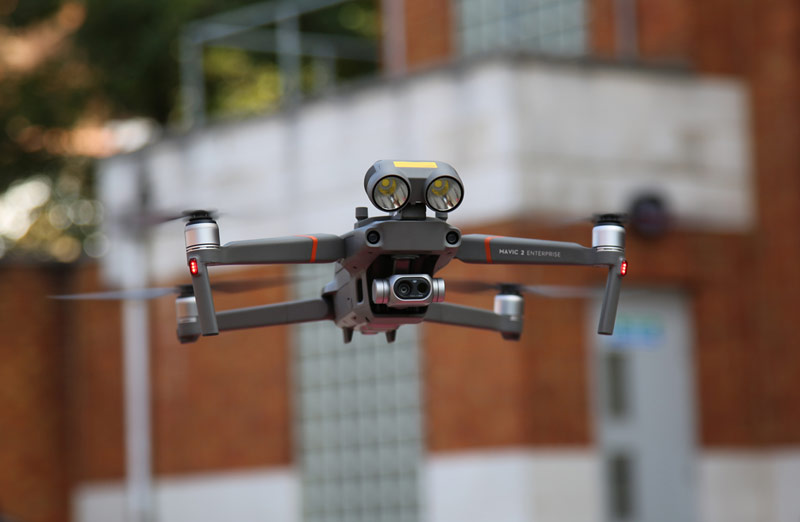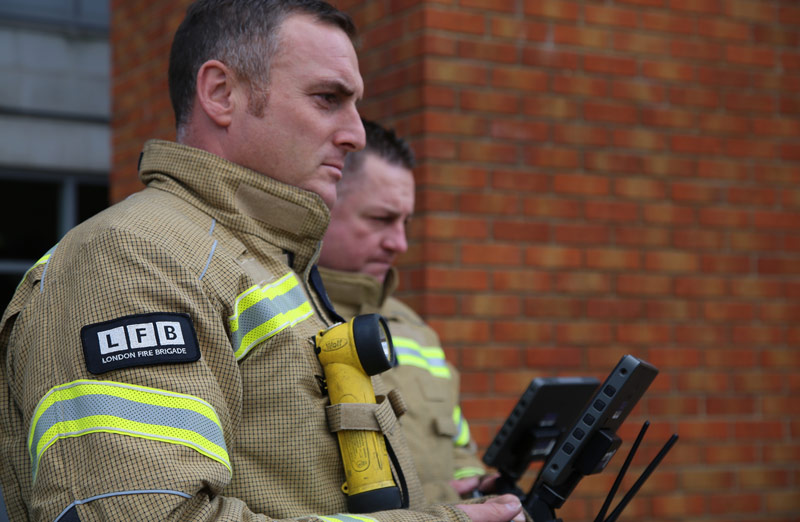Drones are crucial for surveying incidents from above, offering live images and thermal imagery. They provide Incident Commanders with an aerial view, helping to develop effective tactics and reach areas unsafe for firefighters. This enhances safety for our crews and improves our overall response to incidents.
Types of drones
We use two models of drones:
- DJI Matrice 210
- DJI Mavic 2 Enterprise Dual

What the drones can do
- Altitude: Fly up to 400 feet above ground level, or higher in emergencies.
- Speed: Reach speeds of up to 51 mph.
- Imagery: Capture detailed images with two powerful cameras on each drone.
- Loudspeaker: Provide instructions or reassurance via a built-in loudspeaker.
- Spotlight: Illuminate dark or low-light conditions with a bright spotlight.
Camera features
- Optical Camera: The 30x optical zoom camera delivers live images of the incident scene to the Commanders on the ground, and it is capable of reading number plates from half a mile away.
- Thermal Imaging Camera: Detects heat sources, useful for monitoring cylinder temperatures which could be at risk of exploding, assessing heat spread in fires, or locating casualties in water.
Drone operators
Drone pilots must complete a week-long training course, with additional specialist training for tasks like night flying. Each drone is operated by a minimum of two people: one pilot and one camera operator. When possible, a third person assists with setup and observes for potential hazards.

